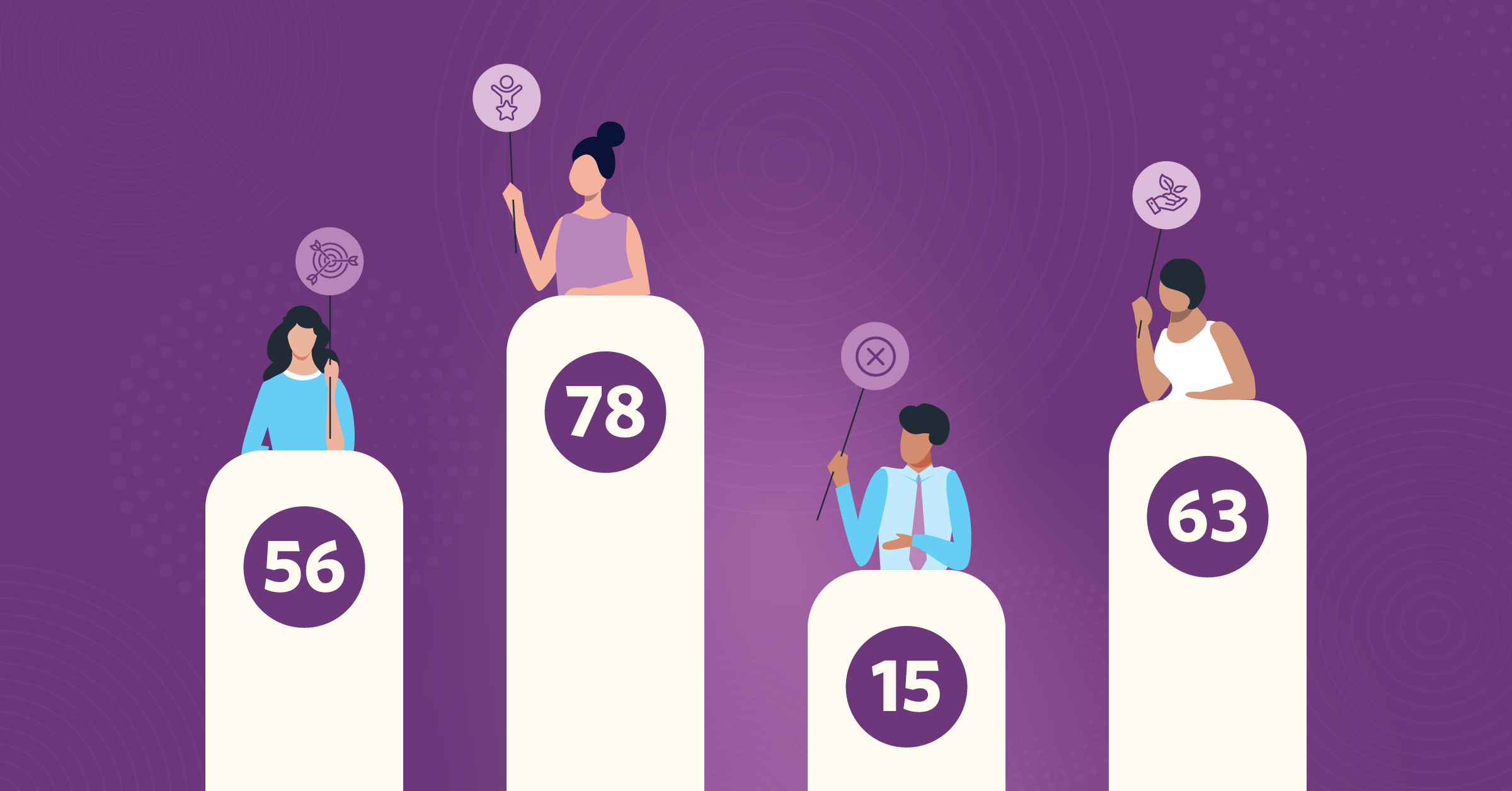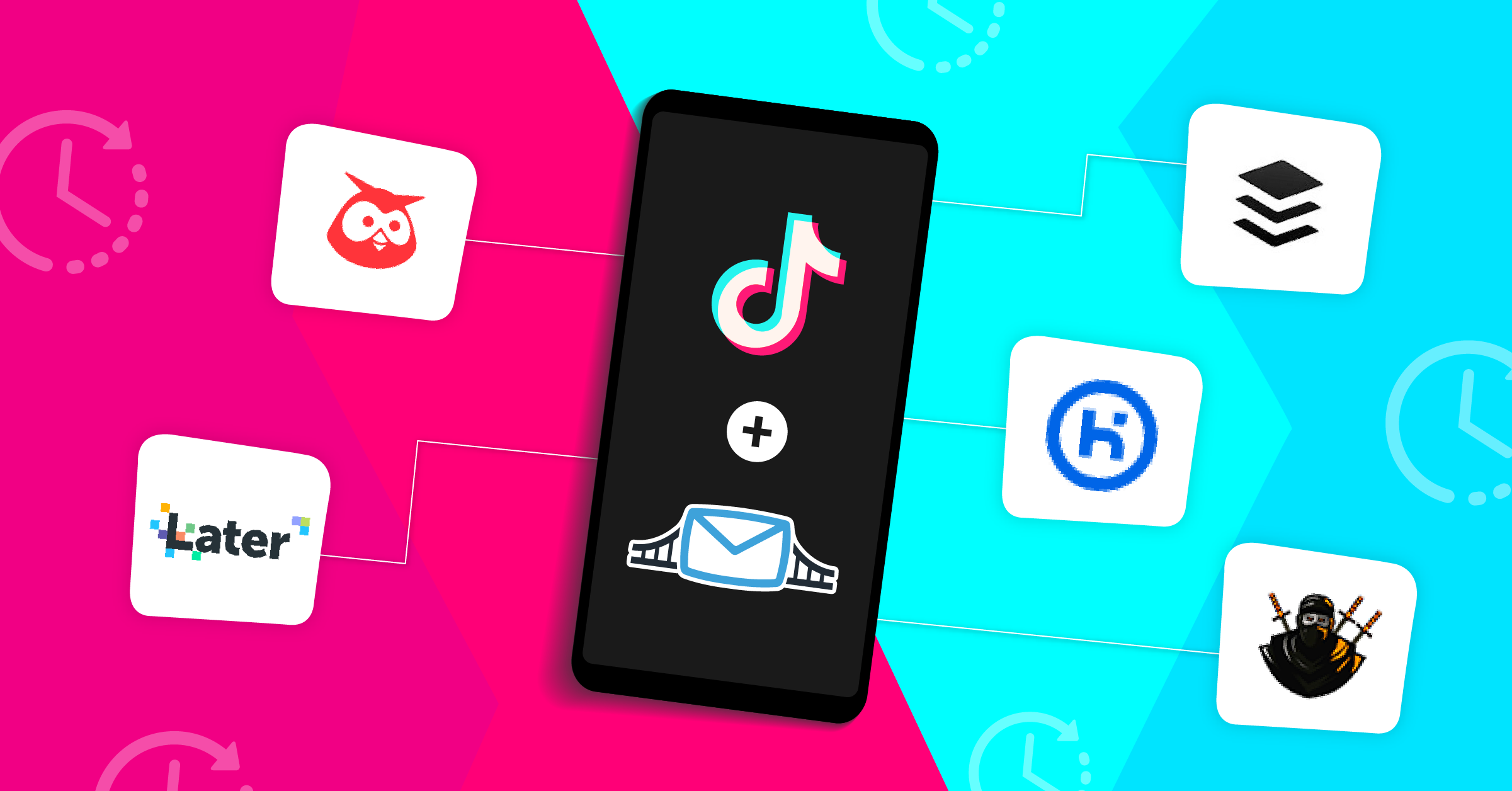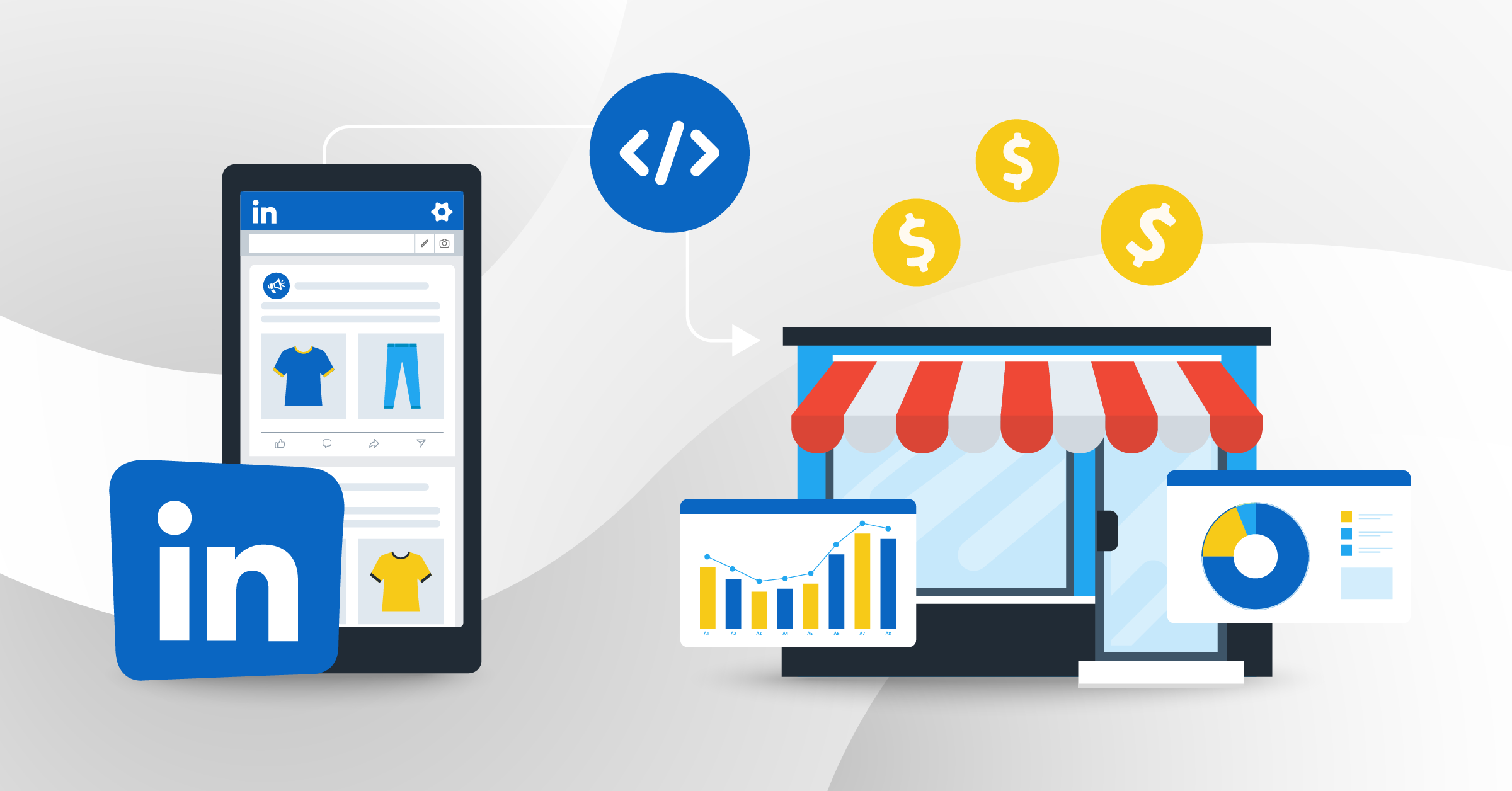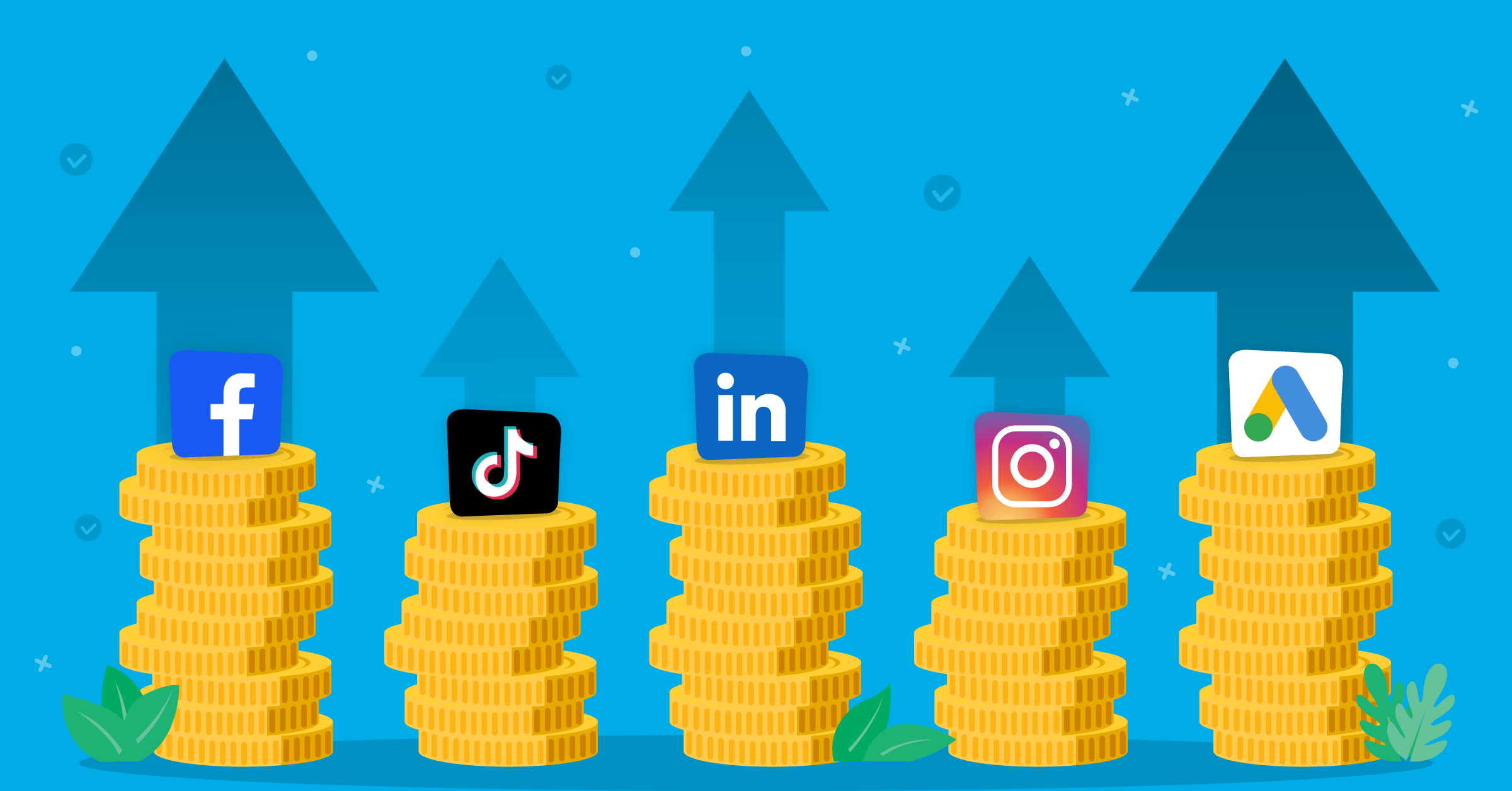
When focusing on lead generation, a large proportion of businesses fall victim to one crucial mistake – measuring success according to quantity rather than quality.
This often leaves marketers in the undesirable position of targeting unqualified consumers that do not share any of the characteristics of their ideal audiences. So how do you avoid this obstacle and ensure you are pursuing leads that are likely to convert?
Throughout this article, you will discover how lead scoring can help to determine buying intentions, how to curate a strategy and the lead scoring best practices that you can implement to accurately evaluate each prospect.
What is lead scoring?
Lead scoring is the practice of assigning numerical values, or points, to a variety of a potential customer’s behaviors and attributes. This may include geographic location, click-throughs on social posts, or the most frequent website page visits, to name a few.
The system associated with this process is used to help businesses determine the potential value of a prospect and how likely they are to convert. By engaging in lead scoring activities, marketing and sales departments can identify which leads require prioritization and appropriately apply resources.
What is predictive lead scoring?
Predictive lead scoring refers to the process of employing predictive machine learning to analyze a user’s historical data and the data of current customers to predict outcomes that may take place in the future.
Based on the past actions of purchasing behavior, predictive lead scoring creates an ideal customer profile, and matches current leads that have aligned attributes with this ideal profile.
This predictive model is sometimes preferred over the traditional methodology as it removes the element of human error, being totally reliant on factual data.
How this works
For instance, let’s say that we know referral leads from other clients are most likely to convert. Each lead that comes from a referral could be allocated five points.
In comparison, customers who find your business through an organic link, such as a Twitter link, may be less likely to engage with you. Therefore, these leads would receive two points less.
You could begin to allocate points in the following way:
- 5 points for referral traffic
- 5 points for businesses with 300k+ in annual revenue
- 3 points if a business does not have an in-house designer
- 2 points for inquiring about occasional services instead of retainer work
- 10 points for working in a specific industry that is relevant to your business
Why is lead scoring important?
When you have a CRM brimming with leads, it’s easy to feel full of hope and potential. Unfortunately, in most cases, many of these leads will fail to convert.
Sales teams have become talented at spotting which leads are most likely to convert and which are not. This is due to the fact that there are certain traits that make B2B leads dream clients or are almost completely incompatible with your brand, products, or services.
All businesses that are actively marketing will eventually receive plenty of leads, especially with PPC campaigns. So it’s crucial for your sales team to have a reliable and standardized approach to assess which leads should get more of your attention and even what offers to present to them. This can help you convert high-quality leads faster, increasing profitability. It’s a crucial part of conversion funnel optimization.
Lead scoring also has a few peripheral benefits worth mentioning. While creating your scoring system, you may realize that some of your marketing campaigns are targeting the wrong audience segments, almost setting yourself up for failure. You may have also given your sales team misguided advice on which leads to pursue. This can help you focus across multiple departments, boosting your odds of gaining more quality leads faster.
How this works
Say that you’re a marketing agency that works exclusively with eCommerce businesses. You know that your target customers fit into a certain profile, which includes the following traits:
- Leads should have titles of CMOs or higher
- Clients in the fashion, sustainability, and home and garden industries typically retain longer and spend more with you
- You’ll work with any brand who will spend 1k per month, but prefer clients who spend at least 5k per month
These particular traits earn positive points with lead scoring. You also know that you have several indicators of high-intent leads, which include the following:
- Getting in touch through your “Contact me”
- Actually scheduling a meeting with your sales team
- Downloading a lead magnet on your site
- Opening email series campaigns regularly
- Creating an account with your company
- They came from referrals of existing clients
You plug all of this information into a lead scoring tool so that it understands how to spot high-value clients. This can either be synced with your CRM (or, in some cases, you can use the native lead scoring tools that come with some CRMs), so all contacts receive a score that’s based on these factors.
So a new potential customer completes the lead form and is a social media manager for a sustainable-focused fashion brand with 2k per month in ad spend after downloading a lead magnet and with the intent to book a sales meeting, they’ll be given a high score.
Your sales team will know to act right away to schedule that pitch deck meeting and close the deal before they get a chance to book with another agency.
How to create a lead scoring strategy
Creating a lead scoring strategy is a research-intensive process, but it’s well worth it. Let’s take a look at the lead scoring best practices that will help you create an effective strategy.
1. Assess your existing customers
The first step of creating a lead scoring model is to closely examine your existing customers.
First, we recommend segmenting your customers. That graphic design agency company might have the following segments:
- High-value retainer clients who spend 3k+ per month and retain several years on average
- High-value, high-profile clients who spend 15k once but grant significant exposure
- Mid-value retainer clients who spend 1k per month for one year on average
- Low-value clients who want to work on an assignment-only basis, which can be more difficult to work with
Each of these audiences has some consistent qualities. For example, the top value retainer clients often tend to be larger-sized companies with big budgets and consistent needs. Most of these high-profile clients also have big brand name recognition.
Some examples of different traits that you may want to look for when creating a lead scoring model ( including traits for both B2B and B2C brands) include:
- Brand name recognition
- Company size
- Company revenue
- Monthly ad spend revenue
- Annual household income
- Geography
- Industry
- Personal credit score
- How they found you
- Expected budget
- Desired features
You can actually create lead forms on Facebook Lead Ads that help you get some of this qualifying information upfront; you just need to know what information you’re looking for first.
Take a look at this example of how Hootsuite used lead forms.
2. Choose a scoring model
Lead scoring models will help you identify high-value sales opportunities at different points of the sales funnel and your individual customer journey or lead lifecycle. This technically goes beyond lead scoring and really falls more under the “contact” scoring sphere, as it can apply to existing customers as well as leads.
Examples of different contact scoring models include:
- Lead scoring models, which are designed to identify high-spending and/or long-retaining customers
- Upselling models, which look for contacts that you can sell higher-cost products or plans to
- Cross-selling models, which help you identify users who may be interested in additional products or services
- Re-engagement models, which help you find users who need to be re-engaged in order to retain them
- Brand advocacy models, which allow you to identify users or customers who may be a good fit for brand advocates or referral programs
Different lead scoring models will take different indicators into account.
Re-engagement models, for example, are going to look for indications of disconnected customers, such as repeatedly filed support tickets or decreased log-ins or usage of the tool.
Upselling models, meanwhile, may look at indicators like users who reach the top limits of their monthly plans.
Robust contact scoring tools will also allow you to test out different versions of a single model, making it easier to determine which factors really lead to identifying high-value opportunities.
3. Include negative scoring
Positive scoring is important as it enables you to push prospects closer to becoming a marketing qualified lead. However, how do you evaluate and manage the unqualified leads that are simultaneously entering your database?
Although these unqualified customers are usually those coming from a geographic location that is out of range of your services or an industry that is unsuitable for your business, they may also be leads who have completely halted their interaction with your marketing.
It is a lead scoring best practice to assign negative scoring to prospects that begin to show signs of prolonged low engagement or take actions such as unsubscribing from your mailing list.
When the sales cycle has become elongated in this way, you can proceed in the following way;
- Deduct 10 points if no action after 60 days
- Deduct 25 points if no action after 90 days
- Deduct 120 points if no action after 120 days
4. Consider using a lead scoring tool
You can conduct lead scoring manually, but this can take a significant chunk of time as you need to assess each lead individually.
Lead scoring tools can be a lifesaver for this reason. They can automate the process of lead scoring, giving you accurate and actionable data.
One thing that’s important to note is that it’s an imperative lead scoring best practice to use scoring models that account for both user demographics and their behavior, while also factoring in the recency and frequency of actions.
A user who has visited a key landing page on your site, signed up for a newsletter, and started a free trial is much more likely to convert than someone who only signed up for a webinar. That being said, that user who completed their free trial six months ago is less “hot” than someone who just signed up for a webinar this week.
Identifying high-value sales opportunities is complicated because customer journeys are often complicated; it’s essential to choose a tool that allows you to take all of the above factors into consideration.
LeadsBridge integrates with some of the best lead scoring tools available, such as;
5. Train your sales team how to use this
This last step is simple: Once your lead scoring system is set up, teach your sales team how to use it.
Remind them that they should never automatically count anyone out or be dismissive; this is a valuable tool that can help them identify which leads they can pursue more intently.
Teach them how to use the system to gauge for easier-to-convert or higher-value leads, by using lead scoring across multiple different platforms. Now, as soon as a fresh batch of leads shows up after a promotion or through a PPC lead sync data drop, they’ll be ready to respond appropriately.
6. Regularly update and refine your strategy
As with any strategy, a lead scoring best practice is to continuously evaluate, update and refine your process. Doing this will allow you to keep up with the ever changing customer journey, shifts in audience segments and other changes that may need to be identified in order for your scoring to be accurate.
Lead scoring is a flexible tactic that is designed to be shaped around your campaign and the various touchpoints that it is composed of.
Let’s say that you introduce a new channel to your campaign and begin publishing ads on Facebook. Not only will you need to add this new attribute, but you will also need to decipher which points you are assigning to each lead based on the unique benefits you wish to acquire from using this platform. These may differ from that of your other social channels.
Can I use native lead scoring tools?
Many CRM platforms have their own lead scoring tools that are built in as a bonus add-on feature. This includes Salesforce®, ActiveCampaign, and HubSpot. There are even email lead scoring tools like those offered by MailChimp.
You can use LeadsBridge to sync information from these marketing tools and create dynamic lead scoring systems. Using our platform-to-platform integrations, you can effectively score and obtain information about your leads.
Discover our popular integrations for each of these marketing tools which can help you achieve your lead scoring goals:
Salesforce® integrations:
ActiveCampaign integrations:
HubSpot integrations:
Mailchimp integrations:
Many of these tools are good baseline-level lead scoring tools. This means that they are automatically synced with your primary source of customer data, such as a tool that you’re already using, and they give you great baseline data.
Most of these tools are not highly specialized like other options on the market that focus exclusively on contact scoring.
For example, some lead scoring tools only allow you to take either behavior or fit into account— not both, even though both are clearly vital to consider.
Others don’t calculate the timing of user actions or the frequency of the actions. There’s no time decay, so someone who interacted with your business a year ago is seen as being just as relevant as someone who got in touch an hour ago.
And some of the email marketing lead scoring tools like MailChimp looks most closely at what happens on their platform, including email open rates and recent unsubscribe rates. This doesn’t draw a full picture.
Can these tools be helpful? Sure. But our recommendation would still be to look for a more specialized tool.
Lead scoring and marketing automation: What is possible?
Ideally, you want to choose a lead scoring tool that integrates with all of your other essential tools that are storing high-value customer data.
In many cases, this may include:
- Your email software
- Your CRM
- Facebook for lead ads
- Other customer data platforms that assess customer journeys
Lead scoring and marketing automation works by syncing this data for you automatically into one place and then transporting it to the lead scoring tool of your choice. That way the tool is getting all of the relevant data possible, and so is your sales team.
How to use Pardot lead scoring
Pardot operates a lead qualification system called Pardot Score, which is designed to help businesses evaluate a prospect’s interest in your product/service.
This system measures how many interactions a lead has with your Pardot assets. This means that the more a lead interacts with your business, the higher their awareness of your offering, and also their score.
Pardot offer two scoring systems;
- Default
- customized
Default scoring system
The default scoring system utilizes the predetermined point allocation system issued by Pardot. When a lead carries out a specific action, such as opening an email, downloading a form or viewing a page, a score is assigned to them by default and added to their Pardot score.
Customized scoring system
With this Pardot lead scoring system, users are permitted to customize the default scores according to the individual needs of their business. In order to ensure that as little changes need to be made, it is a lead scoring best practice to have your marketing and sales team determine which actions should receive a specific score.
These can then be altered over time to better align with changes within your campaign or customer behavior.
How to use Salesforce® lead scoring
When using Salesforce® , there are two options to base your lead scoring upon. These are;
- Predictive
- Manual
Predictive scoring
Predictive scoring within Salesforce® is primarily focused on predicting when a potential customer will convert. Using artificial intelligence, customers, leads and accounts data from across your entire database is analyzed and used to form an estimation of future outcomes.
The benefit of predictive scoring is that it removes the aspect of human error, being entirely reliant on hard data modeling algorithms. To carry out this lead scoring, the Salesforce® Einstein feature is used.
The Salesforce® Einstein feature allows for the exclusion of certain fields within your lead scoring and enables you to choose custom settings. Additionally, if your database does not offer enough information to establish a score, Einstein will pull from the anonymous data of other Salesforce® customers based upon a global scoring model.
This predictive scoring is updated every ten days and can also be configured to present important metrics for your business, such as average lead score or lost opportunities.
Manual scoring
Manual lead scoring in Salesforce® is carried out by optimizing your leads and accounts, rather than building estimates on the probability of a lead becoming a customer. To begin manual scoring, you must create a new score field, which would be a lead or account score, and then start building a scoring model using the properties that already exist within Salesforce® . These may include job titles, email opens, industries etc.
Due to the fact that Salesforce® does not offer a native scoring property, you are required to build this yourself.
How to use Marketo lead scoring
Using Marketo, you can implement a lead scoring system that helps you determine which of your prospects have a higher probability of completing a conversion.
To establish a lead’s score, Marketo use two types of information;
- Explicit
- Implicit
Explicit data refers to demographic information, which includes a prospect’s job title, professional role or geographic location. In comparison, implicit information relates to details that you gather about a prospect based on their online behaviors.
Within Marketo, the lead scoring system can be used to segment users into groups of prospects and leads. Based on the demographic and behavioral information, these groups are then given a score between zero and thirty.
The default threshold set within Marketo is sixty-five points. Therefore, if a user has less than sixty-five points, they will be considered a prospect. If a user has more than sixty-five points, they will be considered a lead.
Negative points are in place within Marketo lead scoring for customers that take certain actions or possess specific qualities. This may include being non-responsive to emails or unsubscribing. Additionally, Marketo allows you to design your lead scoring system according to your business priorities and goals, customer profiles and product specifications.
Key takeaways
With a strong and thorough lead scoring system in place, you can identify quality leads quickly so your sales team can convert them faster. In order to maximize the benefits of this, we recommend keeping the following lead scoring best practices in mind going forward;
- Have all new lead information go straight to your sales team. This is easy with email lead scoring, but make sure that you’re using tools to sync lead generation on platforms like Facebook.
- Ask for qualifying information on lead forms. Even social platforms allow you to create lead generation forms that ask custom questions; take advantage of that, because having the right information from the get-go can make a huge difference.
- Adapt your lead scoring strategies as your business evolves. Over time, changes in the market, consumer behavior, and your own products or services may change your target audience segments. So modify your models accordingly.
Discover how all your potential leads can be sent straight to your sales team using LeadsBridge’s automatic sync for Facebook Ads.



































